It’s the year 1890. Hundreds of Greek and foreign laborers are transferring tracks and cornerstones on the backs of animals, hovering above the Asopos Gorge in between Mount Oeta and Mount Kallidromos. They carve out holes in the rock by hand, using only pickaxes, trying to tame wild nature for the last 18 years, working to build the railway route connecting Lamia with Piraeus and Larisa. Through their daily routes they create a path. Today, that path, aptly nicknamed ‘The Railway Worker Routes’ in their honor, functions as a hiking trail enchanting visitors with its history and verdant natural setting. The region is just two hours from Athens, making it an exceptional option for an action-packed day excursion.
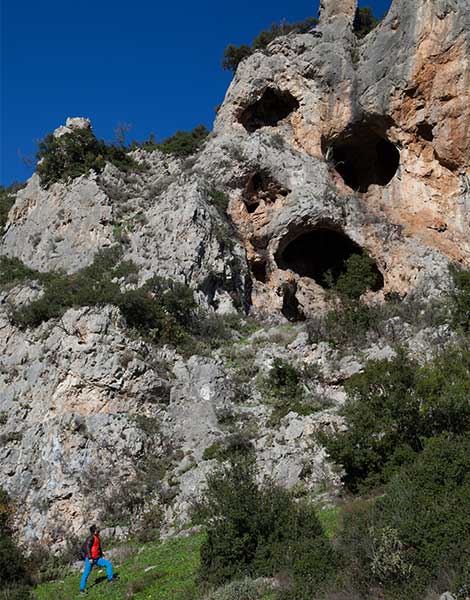
© Olga Charami
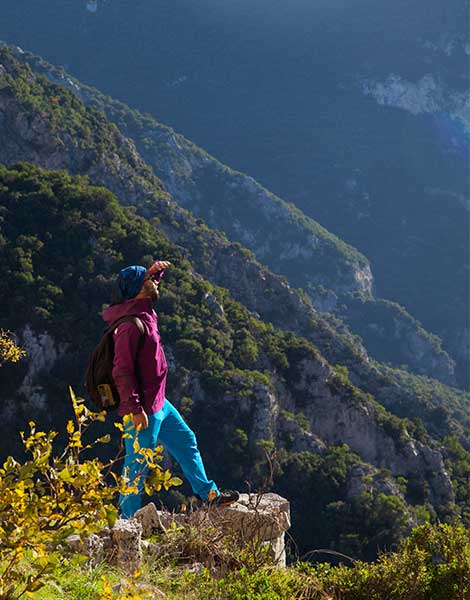
© Olga Charami
The pathway can be traversed in just about two hours. Returning to the starting point will take another two hours, but taking the train back instead is worth it. Since the local routes are still running, this allows you to see more of the remarkable accomplishment of the railroad workers.
Because the works may have begun as soon as Charilaos Trikoupis passed the law in parliament to complete the railway lines, yet this area of Fthiotida – from Bralos to Lianokladi – proved so difficult, that the delivery date was not only extended but constant changes to the assigned companies also took place, not to mention the different approaches to resolving the challenges they faced. As a result, the 2-kilometer Bralos tunnel, the impressive Papadia Bridge and many more tunnels and bridges on the slopes of Mount Oeta were constructed. They were also part of the central railway network up until 2018, when the new route via the Kallidromos tunnel was inaugurated.
Of course, in the age of hydrogen powered trains and the increase in popularity of the railway in tourism, one can only wonder why this charming route has yet to acquire its own tourist train, similar to the ones at Kalavryta, Pilio and Olympia. Having been announced for several years, it has not yet been put in operation.
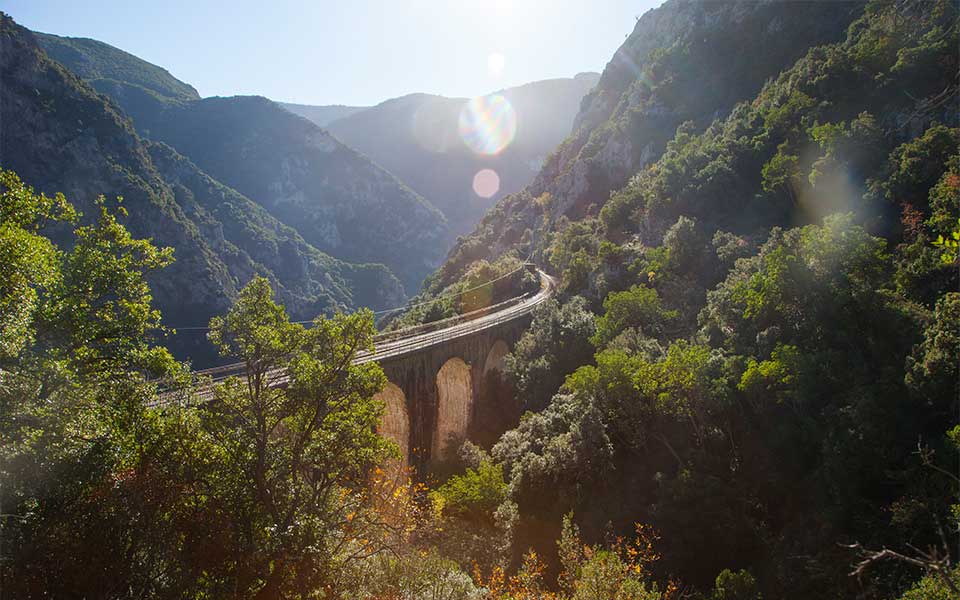
© Olga Charami
Views that stop you in your… tracks
The autumn sun is high, the yellow leaves turn golden and shadows fall along the side of the gorge, creating an intensely dramatic scene. Birds are chirping and goats roam the slopes, while eagles soar even higher – soon on this hike, watching all of this, you reach a sense of absolute tranquility. We follow the signage, a few signs depicting a train, but we rarely need them. The course is clear: the footpath moves northwest along the gorge walls, at a considerable height above the riverbed, under a setting of wild rock formations and caves. The footpath is perfectly accessible, almost flat, and the difference in altitude is hardly felt. It could actually be a very easy route, safe for three sections where past landslides have created a series of steep slopes covered in gravel. Caution is needed here. The sign at the starting point indicates that this hike is accessible for the entire family, but in reality it is not recommended for young children unless safety precautions are taken.
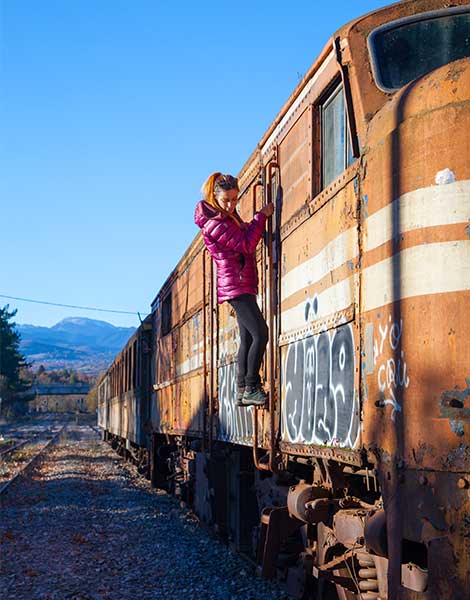
© Olga Charami
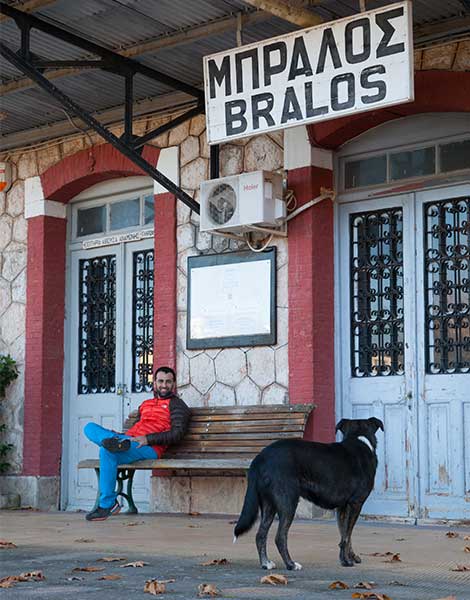
© Olga Charami
Along the way, through the thick vegetation, we see the railway tracks below us, a series of small tunnels and a gorgeous bridge. This image brings the railway’s history and daily schedule to mind. Once out of the canyon we walk through the oak and kermes oak trees, along a dirt road and finally along the tracks that lead to Asopos station, an incredibly charming setting for exploration, rest and picnics. Of course, if you have traveled to Bralos by train, this station will be your starting point.
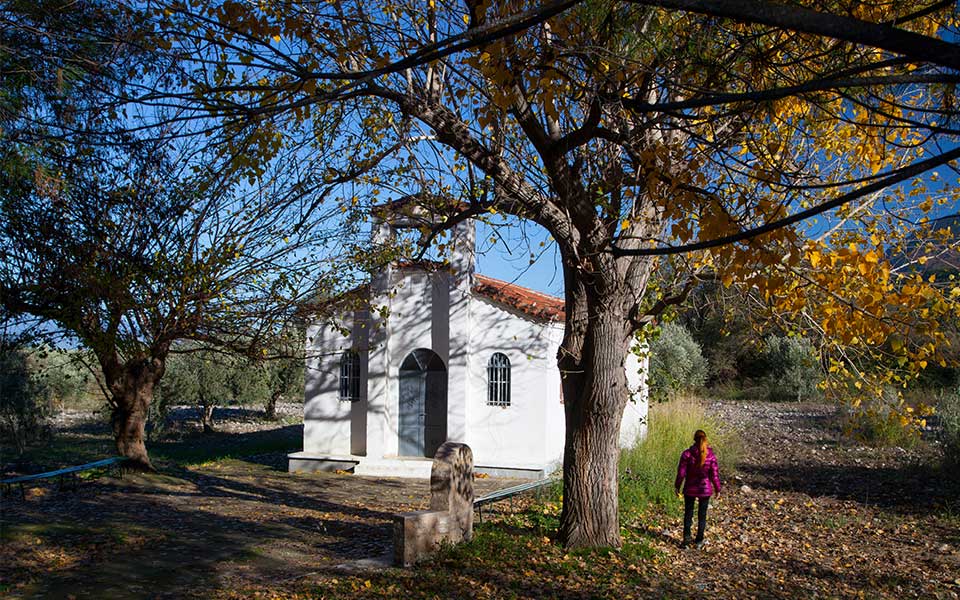
© Olga Charami

© Olga Charami
Yet the secret that locals and hikers will share is that this footpath boasts the best… cooling down treatment: an enjoyable dip in the waters of the Damasta hot springs, also known as Psoroneria. The hot springs are located just a few kilometers from Iraklia, the starting or ending point of the footpath, have a temperature of 33 degrees Celsius and are a steaming temptation as the atmospheric temperatures drop!












